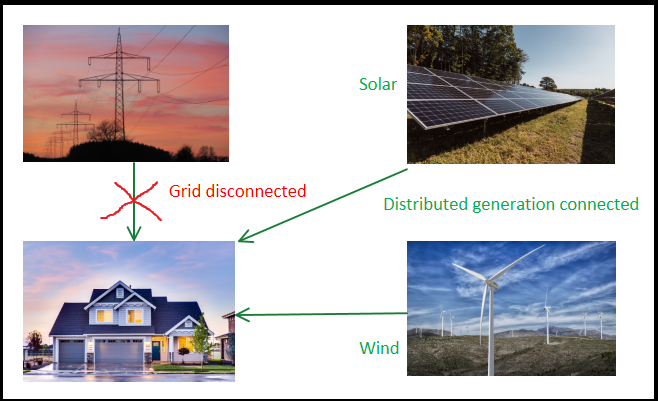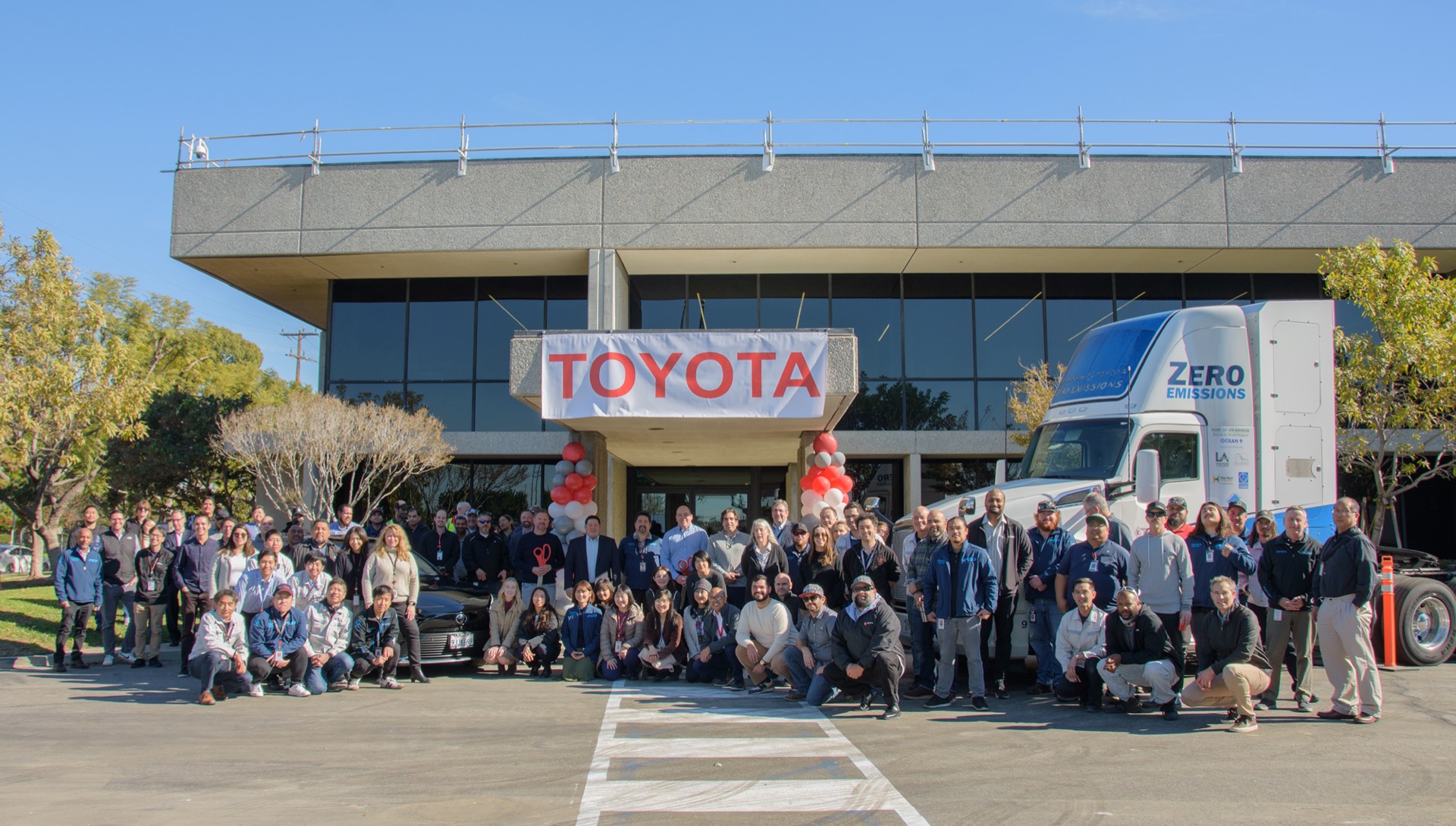What is Islanding ?
Power system islanding comes to the picture when their is an interconnection of Power grid with distributed generation (DG) like in DC Microgrid a common load is shared between Grid and distributed generation such as solar, wind etc, in such setup when there is an outage at the grid side, than it is said to be Power System operating in Islanding mode.
Supply from the grid is stopped whereas distributed generation still supply’s the load in such cases DG connected with load is said to be islanded or standalone.
Although there are several challenges with Renewable energy integration with grid, but during power system islanding the cause is different
The Grid outage could be due to many factors such as breaker trip, fault, intentional trip, or grid maintenance, environmental factor, equipment failure. The Islanding mode could be intentional or unitentional.
In case of microgrid system at the time of Grid failure controllers in microgrid acts in such a way that it itself disconnects from grid and allows DG to power the load.
Reason Why Unintentional Islanding is dangerous in Power system
Personal Safety
- Generator may back feed power to the disconnected lines
- Maintenance safety for workers
- public safety risk from broken hanging lines
Power Quality
- Voltage instability
- frequency instability
- Reduced power regulation
- Power disruption
Equipment damage
- Equipment could be damaged due to sudden change in the power
- due to voltage and frequency instability there is more likely chance for equipment damage
How to detect Power System Islanding ?
There are two methods of Islanding detection for Microgrid passive and active methods, passive method includes detection or sensing of related parameters of such we can give an idea of probabilistic failure whereas in active method small signals are generated to the grid and further detecting the change in the signal.
Passive method for Islanding detection
Under/over voltage detection
In this method change of Voltage is detected either up or down from its normal position or value. For example normal voltage is 240V in India if there is a change in the load in the grid than suddenly the voltage will drop in case of overloading or voltage will shoot up in case of underloading.
Under/over frequency detection
In Microgrids similar to voltage deviation there is also a frequency deviation when considerable value of load changes however to detect the small change in frequency sophisticated system needs to implemented.
Rate of change of frequency
Rate of change of frequency is also similar to frequency deviation in Microgrids this is usually measured when the load changes for good amount of time and in that case change of frequency is measured with respect to time, when this value is 0 than it is said to be constant frequency
Voltage phase change detection
phase change or phase deviation is also one of the measures to check the change in load or power system islanding, constant phase deviation result in islanding detection.
Harmonics detection
when there is a change in load there is a frequency deviation and voltage deviation in this case if we calculate the continuous fourier transform than the finding is that voltage and current has multiple frequencies which results in power loss. This is the best method for the detection of islanding in power system as calculation of multiple frequencies is more easy and accurate.
Also Read Energy storage as virtual transmission and Grid booster
Active method for Islanding detection
Negative sequence current injection
In this method a negative sequence current is injected through a voltage source converter controller, and quantifying the net negative sequence current at the point of common coupling (PCC).
Impedance measurement method
In this method impedance is measured fed by the inverter, a small AC current is forced at point of common coupling (PCC) of Microgrid and the net change in the voltage is detected, when the grid is connected there is almost no change in the impedance as grid is infinite voltage source in case of Islanding even a small change in the voltage could result in a good over voltage, thus good change in impedance.
impedance measurement at a specific frequency
This method is similar to the impedance measurement in this method inverter forces a signal at a particular frequency and the net harmonics is detected in case of Islanding the harmonic is more, otherwise in normal operation this frequency is filtered out.
Frequency bias
In this method a signal of slightly different frequency is forced to the grid and the phase shift is adjusted at the end of the signal at 0 voltage and the net change in power factor is detected.
Islanding Protection or Anti Islanding
Anti-islanding is the technique of preventing System Islanding Occurrence at the load side. The only recommended method to prevent the occurrence of Isalnding is to provide sufficient facility of Distributed generation to the load for which protection is required.
Anti-Islanding Test
There is something called Auto disconnect timing test in which inverter needs to disconnects from the network grid within 2 seconds of a power failure and inverter must not be connected 60 sec of the grid re-establishing power supply after power failure which is known as Reconnection timing test.
Impact of Islanding
Power Electronics Equipment damage – Inverter damage is the biggest threat as change in the load causes inverter to operate in extreme conditions and some times the circuit breaker inside the inverter trips frequently which results in permanent damage to the inverter safety and in the next cycle inverter gets damaged.
Customer Side equipment damage – due to islanding the customer side damage is more frequent due to bi-directional current flow due to islanding and distributed generation and often voltage fluctuations.
FAQs
What is the need of power system islanding ?
Power system islanding is not an intended operation and thus not needed to occur as in this case the grid is disconnected from the residential loads due to which distributed generators comes in the pictures thus islanding situation is a loss for the Utility service provider.
What is Anti-Islanding in Power system ?
Anti – Islanding is a method to prevent an Islanding in a distributed Grid network. The only recommended method to prevent the occurrence of Isalnding is to provide sufficient facility of Distributed generation to the load for which protection is required.
What are the Anti-Islanding Test ?
Auto disconnect timing test is used to conduct Anti-Islanding test.
What are the Islanding detection techniques ?
There are two methods of Islanding detection Active and Passive. Active method includes negative sequence current injection, Impedance measurement method, Impedance measurement at a specific frequency, Frequency bias. Passive methods includes detection, Under/over frequency detection, Rate of change of frequency , Voltage phase change detection , harmonics detection.
What is anti-islanding in solar inverter ?
Anti-islanding protection is a commonly required safety feature which disables PV inverters when the grid enters an islanded condition.



